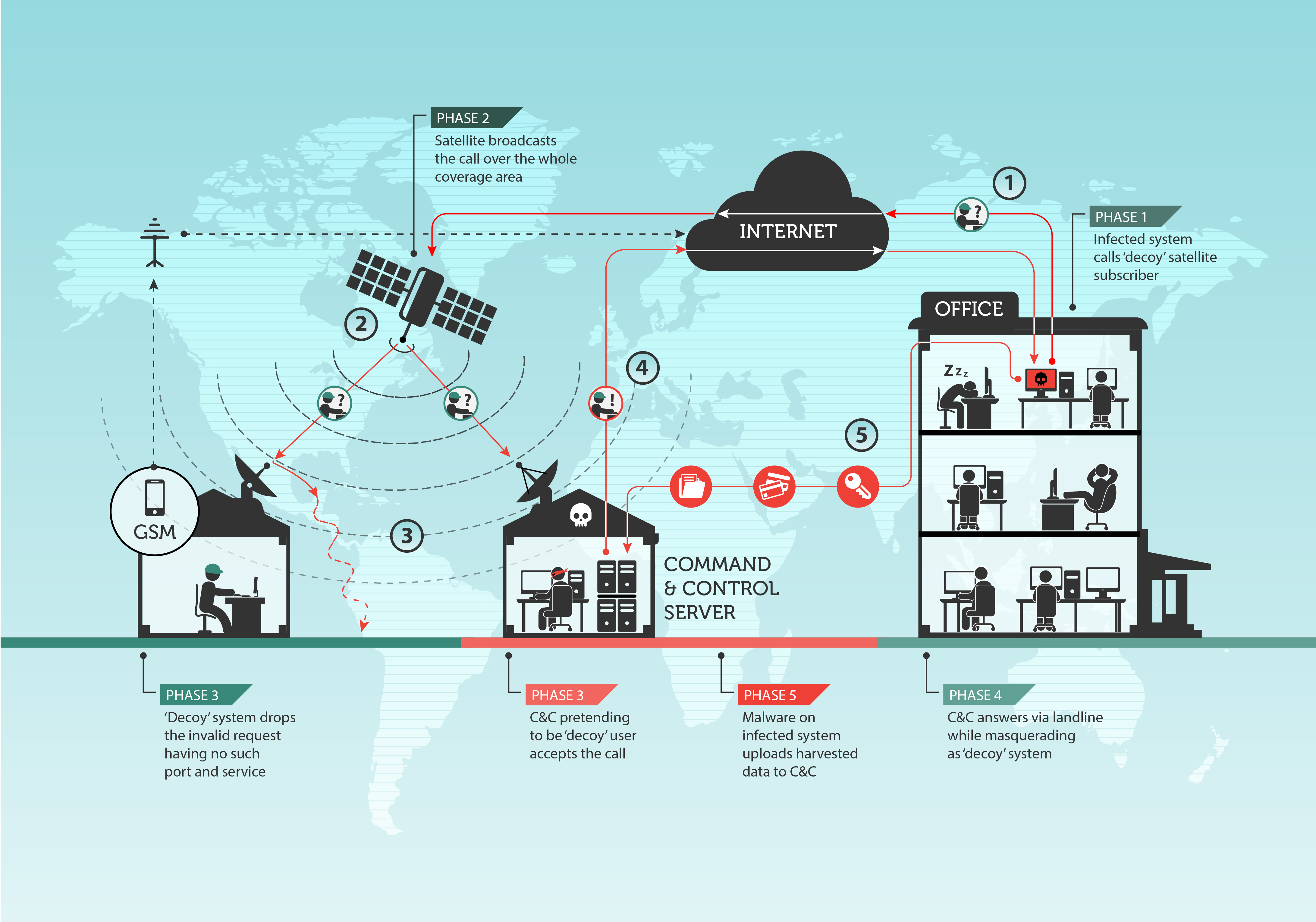How does satellite internet hijacking work
To attack satellite-based Internet connections, both the legitimate users of these links as well as the attackers’ own satellite dishes point to the specific satellite that is broadcasting the traffic. The attackers abuse the fact that the packets are unencrypted. Once an IP address that is routed through the satellite’s downstream link is identified, the attackers start listening for packets coming from the Internet to this specific IP. When such a packet is identified, for instance a TCP/IP SYN packet, they identify the source and spoof a reply packet (e.g. SYN ACK) back to the source using a conventional Internet line.
At the same time, the legitimate user of the link just ignores the packet as it goes to an otherwise unopened port, for instance, port 80 or 10080. There is an important observation to make here: normally, if a packet hits a closed port, a RST or FIN packet will be sent back to the source to indicate that there is nothing expecting the packet. However, for slow links, firewalls are recommended and used to simply DROP packets to closed ports. This creates an opportunity for abuse.

